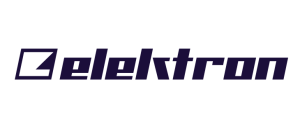Powderfinger returned home to tour Australia after a very successful tour of Europe and UK. They brought the biggest version of their show to date. The arena sized show might be a major step up for the band, but the show has been translated to the big stage quite successfully by the team behind the production. John Grimshaw reports:
Production Manager Ifan Thomas is about as relaxed as they come. His Bono style semi-transparent sunglasses and thongs complete the look of a Production Manager who clearly has everything under control. His intention was to move into semi-retirement here in Australia, but his reputation saw him called up out of the blue to manage the Powderfinger tour.
When asked to describe what he does, he told us his role was part Tour Manager, part Account Manager, part promoters rep, and obviously all Production Manager. For so many hats to sit on the one head, Ifan relies on a close-nit team environment. When you are touring with a bunch of people, it would seem the most important ingredient for Ifan is ensuring and maintaining the ability for everyone to be able to work very closely together.
Clearly this is one of Ifan’s talents as he goes on to say that he likes a working environment where everyone feels they have a say. So, he likes to take the idea of ‘two heads are better than one’ to the next logical step.
This is the main way he deals with the breadth of scale for the shows – from the small venue ones in Europe to the arena shows in Australia. With everyone on board, the team is able to make the show as good as it can be. He describes this process of scaling as, “Not the same monster for every show, but the best monster for that venue.” His work will be cut out for him as the tour moves next year on to Spain, Belgium, Brussels, Austria, Germany and the UK – all bigger venues then the previous European tour – which is what makes the arena experiences in Australia especially important.

Audio
Mark McElligott is not a fan of Line Array systems, so it must have taken some convincing to get him to use the new Tangent Array system from Nexo. His close relationship with Johnston Audio and previous reliance on the Nexo Alpha system probably had a great deal to do with the decision. From Mark’s point of view, the Alphas were perfect for this band.
“They still have that rock pedigree. The guitars sound like guitars. Not like Line Arrays – off axis they sound like shit.” The “clean, pristine” sound with little bottom end is not what Mark needed, so he was initially skeptical about the Nexo GeoT Tangent Array. However, after hearing the system in Brisbane during rehearsals for the tour, he decided to take a punt. The result has been very impressive sound for this tour. He said it took him a couple of shows to get used to the clarity and spread of the sound. “You hear the PA as one unit, they don’t sound like they are split up.” This is despite the fact that the subs are sitting in front of the stage and the main PA is set so high. The Nexo system is also capable of flying the Subs with the main PA, something that Mark would have liked to have done so that the front rows of punters were not flattened by the sound. However the hardware needed was not available by the time the show was underway, and standing in the front row in front of the PA subs wasn’t all that bad – in fact the audio quality there was exceptionally good!
Coming from a studio background, Mark likes heavy use of compression in his live mix. The drum kit runs a special system of hard compression that is run back in the console and mixed with the live output. It probably runs about 50/50 compressed audio to live audio, which Mark describes as giving the kit some real punch. There is also lighter compression run over the Guitars and the whole mix output.
The mics run into Avalon SPS727 valve based mic preamps – giving the vocals the warmth that Mark likes to hear in the vocal mix. Running with a slew of other effects – gates, reverbs, harmonizers, distressors (see list), this is a reasonably complex rig that Mark runs from the Midas Heritage H3000 console.
Interestingly, Mark also uses a baby Allan and Heath 16ch console – one that would be more at home in a pub – for the small ‘acoustic style’ section. The idea is to give this part of the gig a different sound – which it certainly does.
Another interesting part of this gig is that the FOH is connected to the stage via fibre optic cable rather than a traditional multicore. The Optocore LX 4 Network System allows for 48 channels of audio to be sent from the stage and 16 returned to the stage, all without signal loss and for a seriously long distance if required. The stage end of the system incorporates a remote controllable head end with built in mic preamps, remote switchable phantom power and even some data transfer.
There are two RS485 returns from the FOH position which can be used for DMX or AES/EBU outputs, as well as a video send from the stage. A laptop at FOH controls the system, allowing the user to control master level for system balancing as required.

How Mark McElligot got started
Like many FOH engineers, Mark McElligott was a musician first until he saw the light and the employment prospects.
A native of Townsville, Mark managed to get himself into Brisbane after lying about his abilities as an engineer to a covers band that needed an urgent replacement.
Apparently there was enough native talent that he pulled off the gig without the band noticing – and thus started a career in studio and live engineering.
Mark comes from the days when Brisbane had a vibrant live scene, and the bands used to occupy what is affectionately remembered as “The Target Building” – a disused Target store in Fortitude Valley that was taken over for a number of years in the eighties by Brisbane’s up and coming bands. This was a period of excitement for Mark, as he worked on numerous projects and bands in his studio. This was the environment that fostered Powderfinger themselves.
Lighting
Lighting Designer Jason Boyd has been working with Powderfinger since February 2000, but this leg of the tour is the first time he has been able to stretch out his concepts to an arena style show for the band.
Home for Jason was New York, though his mashed up US accent places his heritage a bit further south (Austin, Texas). He came to the Powderfinger design after taking a year off, and presented the band with three design concepts. The resulting look stems from an idea of “sunlit zen” with thin horizontal lines. Jason says he likes and uses a lot of saturated colour. The show starts as an “old school rock” show. With a red curtain hung as a backdrop, the show starts very static. Little if any moving lights actually moving. After a couple of songs, the curtain is dropped to reveal a very long thin LED screen in front of a black backdrop. This screen (along with the two side screens which have been only showing static images up to this point) suddenly starts to add moving textures to the stage, with the lighting coming to life as well. After a few more numbers like this, the music moves into a more acoustic style section, with the band shifting downstage in front of a black star cloth that is rolled in behind them. After this comes the final ‘look’ of the show, with all guns blazing and a cyc now revealed, the stage is all colour and movement, with more and more light up to the final song.
Another ‘less than usual’ aspect to the lighting show was the lack of followspots. Jason had a number of fixed Source 4 Profile rigged instead to cover the needs of a ‘followspot’ look – of course the band probably needed to be trained to not move out of the light! We asked why he decided against the follow spots.
“I think they are distracting most of the time – and the band is so democratic if I had 1, I would need 5.”
Some of the key things that Jason worked on with the design was matching the lights to the video. Colour matching and complementing the movement of the images was high on his list of priorities. The initial design was created using WYSIWYG. However, the programming period was a mad rush, as he only had 2 days to prepare the Whole Hog II for the first gig. Jason said that he has quite enjoyed the Australian leg of the tour, thanks especially to the crew supporting him. Jeff Pavey – Lighting Crew Chief, Luke Radin – Moving Light Tech, and Pat Clarke – Dimmers. On the subject of the lighting supplier, Jason was very effusive: “Chameleon is awesome as well. I have had the best touring experience in 8 years.”
Video
Video Director Scott Walton of 50/50 Films showed us through the system. There are three main video elements to the show, two side screens and the long thin LED wall. The side screens have been reformatted to produce exactly square images, while the LED wall has pixel ratio of 1100 x 170. The replay content for these displays was produced by 50/50 Films, the same mob that did the music videos for Powderfinger. Live content is provided by two operated cameras, one remote control camera and a couple of lipstick cams.
The resulting images looked very slick and professional, with the Barco LED strip providing a very bright high quality image throughout the night. It was certainly interesting to see how this element of the show was carefully worked in with the lighting design to produce an overall effect. It would certainly be true to say that the LED screen was more used as a complex lighting effect then as a traditional video replay.
When compared with many shows that originate overseas, this was an extremely simple production, with very little in the way of touring video hardware. While this might have led to some compromises in overall picture quality, the end result was still very good.
The replay images are run from a Dataton Watchout system, which has a computer per display running backstage, and a main control computer cueing them for playbacks, loops, still images and live image pass-through. For an extremely simple system, they were able to produce a quite complex vision display – easily comparable to the newest version of the Catalyst control systems (version 3).
PA SPECIFICATIONS:
MAIN SYSTEM
- 24x NEXO GEO T 4805 ARRAY
- 6x NEXO GEO T 2815 ARRAY
- 12x NEXO CD-18 ULTRA SUBS
- 20x CAMCO VORTEX 6 AMPS
- 4x NEXO NX241 PROCESSORS
SIDE HANG
- 8x NEXO M3 MID-HIGH
- 8x NEXO B1 BASS CABINETS
- 8x CAMCO VORTEX 6 AMPS
- 2x NEXO NX241 PROCESSORS
INFILL
- 4x NEXO ALPHA E-M
- 1x CAMCO VORTEX 6 AMP
- 1x NEXO NX241 PROCESSOR
FOH
- MIDAS HERITAGE H3000
- 52 CHANNEL CONSOLE
- 1x AL SMART C1 COMPRESSOR
- 1x KLARK TEKNIK DN 360 EQ
- 1x LEXICON PCM 91
- 2x LEXICON PCM 80
- 1x TC M 5000
- 1x TC 2290
- 2x TC D-TWO
- 2x EVENTIDE H3000 SE
- 2x EMPIRICAL LABS DISTRESSORS
- 7 ch DBX 160x COMPRESSORS
- 1x AL SMART C1 COMPRESSOR
- 8 ch DRAWMER 201 GATES
- 4 ch DBX 903 COMPRESSORS
- 2x AVALON VT 737 SP MIC PRE AMP
MONITORS
- 1x MIDAS XL250
- 52 CHANNEL CONSOLE
- 8x KLARK TEKNIK DN 360 EQ
- 1x TC M2000
- 8 ch BSS DPR 402
- COMPRESSORS
- 8 ch DRAWMER 201 GATES
- 16x NEXO PS 15 WEDGES
- 8x NEXO M3 MID-HIGH (SIDE FILL)
- 8x NEXO B1 BASS (SIDE FILL)
- 12x CAMCO VORTEX 6 AMPS
- 6x NEXO TD MKII PROCESSORS
- 2x NEXO NX241 PROCESSORS
MULTICORE SYSTEM
- OPTOCORE LX 4 NETWORK
- SYSTEM WITH OPTICAL FIBRE
- CABLING – 300m
LIGHTING Supplied by Chameleon Touring Systems…
- 6x Source 4 Profile 19 deg
- 44x Par 64 ACL
- 48x Par 64 NSP
- 15x 8 Lite DWE
- 2x 1.3m Mini Strips
- 3x 2.4m Zip Strips
- 15x 8 Lite Colourset scrollers
- 6x 500w QIs (Clear Bulbs)
Movers…
- 15x Technobeams
- 11x Mac 2000
- 4x Mac 2000p
- 21x Mac 2000 Wash
- 4x Mac 500
- 11x Atomic Strobes
- 6x City Colours
Control…
- Whole Hog 2 + wing
- 3x 48 way Dimmers @ 2.4k
- 4x 12 WAY Power Distro
POWDERFINGER CREW LIST
- Prod Manager: Ifan Thomas
- Prod Assistant: Oana Gilbert
- FOH: Mark McElligott
- Mons: Steve Brown
- LD: Jason Boyd
- Stage Manager/ Matt “Matrix”
- Backline: McNamara
- Drums: Duane Billings
- Guitars: Chris “Toph” Hough
Johnston Audio
- FOH Rigger: Drew Menard
- System rigger: Paul Gould
- Monitor Rigger: Mark Crawley
Chameleon Lighting
- Crew Chief: Jeff Pavey
- System Rigger: Pat Clark
- System Rigger Luke Radin
Video
- Producer Paul Butler
- Director Scott Walton
- Tech/Camera Op Shane Davidson
- Video Wall Tech Olan Wynton
Trucking
- ATS Logistics – Terry Turner
Article from January 2004 issue of CX Magazine








































